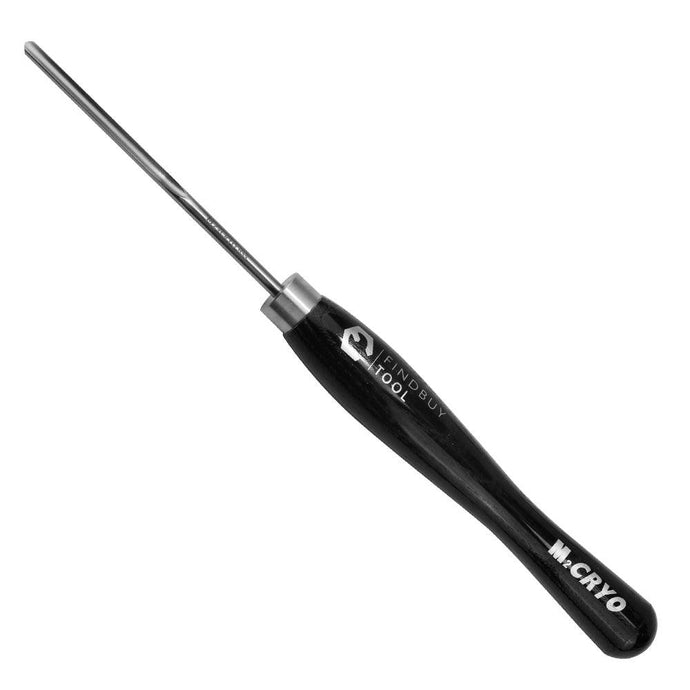The spindle gouge is a versatile tool in woodturning, especially prized for creating smooth, intricate shapes along the wood's grain. But to get the best results from this tool, choosing the right grind is essential. The grind of a spindle gouge determines how it engages with the wood, affecting everything from control and cutting efficiency to the finish quality. A well-chosen grind can elevate a woodturner's craft, allowing for detailed work on beads, coves, and other delicate profiles. Among the various options, a few specific grind styles stand out for spindle work, each with unique benefits.
One of the most popular grinds for a spindle gouge is the traditional grind, also known as the "standard" grind. The traditional grind is characterized by a relatively short bevel angle, typically set between 35 and 40 degrees, and a rounded tip. This grind offers excellent control for making small, precise cuts, making it ideal for turning beads and detailing. Because the bevel is shorter and the cutting edge more contained, the tool maintains a smooth transition when working on smaller diameters. The rounded profile minimizes the chances of catching, which can be particularly useful for novice woodturners who are still mastering the basics of handling a spindle gouge. This grind is especially well-suited for spindle work involving tight curves and small, intricate designs where precision is paramount.
Another highly effective grind is the fingernail grind, also known as the "swept-back" grind. This grind has a longer bevel angle, typically between 40 and 50 degrees, with the wings of the cutting edge swept back to create a fingernail shape. This profile gives woodturners more cutting surface along the tool's sides, allowing them to use the gouge at various angles for both cutting and shearing. The swept-back wings make the tool highly versatile, capable of creating both rough and detailed cuts, depending on how it is presented to the wood. The fingernail grind is a favorite among more experienced turners because it allows for a wider range of motion, making it easier to create flowing curves and transitions without lifting the tool. This grind is perfect for projects that demand flexibility, as it enables woodturners to perform multiple cutting techniques with a single tool.
For those focused on achieving exceptionally fine detail, the detail grind is another option to consider. This grind involves a steeper bevel angle, often ranging from 25 to 30 degrees, with a narrower cutting edge. The detail grind sacrifices some material removal capacity in favor of high control over tiny, delicate cuts. This grind is best suited for intricate work such as finials, small grooves, and decorative embellishments, where every minor adjustment makes a significant difference. However, it requires a skilled hand, as the narrow profile offers less forgiveness when dealing with irregular grain or rough wood. The detail grind excels in applications where precision is critical, making it a popular choice for woodturners who specialize in small-scale, ornamental work.
Selecting the best grind for a spindle gouge depends largely on the intended use and the skill level of the turner. For general-purpose spindle work, the traditional grind is often the go-to choice because it provides a balance of control and ease of use, making it an excellent option for beginners and experienced turners alike. Its rounded shape allows for controlled, predictable cuts and is forgiving when working on fine details, especially when tackling new designs. The fingernail grind, on the other hand, appeals to turners who seek greater versatility and are comfortable with dynamic tool presentations. With its extended cutting surface, the fingernail grind is perfect for creating flowing profiles, enabling turners to adapt their cuts without switching tools or altering angles frequently.
Achieving these grinds typically involves the use of a sharpening jig, which allows for consistency and repeatability. A sharpening jig holds the gouge in place at a predetermined angle, making it easier to grind to the desired shape without altering the bevel unintentionally. This is particularly useful for creating a fingernail or detail grind, as these profiles rely on precise wing sweeps and edge angles to work effectively. High-speed steel (HSS) spindle gouges are recommended, as they hold an edge longer and can withstand the heat generated during sharpening. Regularly honing the tool after grinding helps maintain a sharp edge, further enhancing the tool's control and reducing tear-out.
Ultimately, the best grind for a spindle gouge is the one that aligns with the woodturner's specific needs and style. While the traditional grind offers a reliable, controlled edge for most spindle work, the fingernail and detail grinds open up new possibilities for those looking to expand their range of techniques. For beginners, starting with a traditional grind can help build confidence in handling the gouge and achieving smooth, consistent cuts. As skill levels progress, experimenting with different grinds, such as the versatile fingernail grind or the precise detail grind, can reveal new ways to shape wood creatively.
Choosing and mastering the right grind for a spindle gouge adds to a woodturner's confidence and ability to create stunning work. From flowing curves to intricate embellishments, each grind has its place in the art of woodturning, helping to unlock the full potential of this essential tool. The more a turner explores these options, the better equipped they are to find their signature style, producing work that showcases the spindle gouge's extraordinary versatility.
